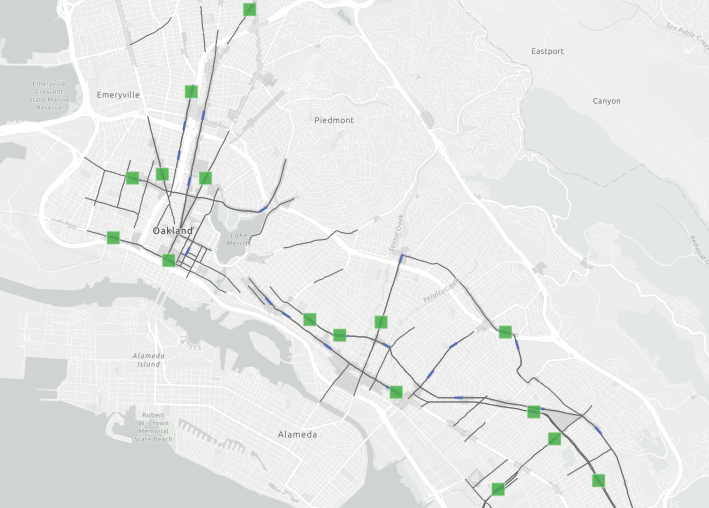None of the six cities authorized to test the use of speed enforcement cameras has deployed them yet.
A year-plus after the passage of A.B. 645 in September 2023, none of the six cities included in it - San Jose, San Francisco, Glendale, Oakland, Los Angeles, and Long Beach - have speed cameras in place, and several of them seem to have completely dropped the ball. A seventh city, Malibu - added to the list after the passage of a different bill, S.B. 1297 this year - has already begun development of a policy and impact report, as required by law.
All seven cities said they wanted to deploy cameras to help reduce speeding.
A.B. 645 included a strict set of requirements, including detailed restrictions on how the programs were to be set up, how many cameras could be deployed (according to city population), how the public was to be involved in deciding where to put them, and what the money raised from citations could be used for - among other rules. Each city had to formulate a policy specifying things like how it would protect the data from unauthorized use, and prepare a report on potential impacts to civil liberties, collisions, and costs. All the pilot cities are required to consult and work collaboratively with relevant local organizations, including racial equity, privacy protection, and economic justice groups.
Each city is allowed a specified number of cameras, based on its population. In addition to formulating a plan, every city also had to identify funding to move forward.
So far, San Jose, San Francisco, Glendale, and Oakland have publicly announced which locations they are considering for the cameras. Los Angeles and Long Beach have little to no public-facing information available, and have not responded to inquiries about their progress.
San Jose is studying 63 potential locations, and plans to narrow it down to 33 some time this spring.
The city applied for and received a grant from federal Safe Streets and Roads for All program of $8.5 million to help cover some of the program's costs, including data collection, a racial equity analysis, public engagement, and the cameras themselves. The city estimates total program costs will be $17 million, and expects the remaining amount to be covered by citations, once they begin to be issued. However, both state law and the city emphasize that the program's purpose is not to make money, but to reduce speeding.
A.B. 645 requires cities to invest any potential profit into traffic calming measures.
San Francisco identified seventy potential locations for cameras on its high-injury network, then measured vehicle speeds and volumes at those locations. It then recommended the 33 locations that had the highest percentage of drivers going more than 10 mph faster than the posted speed limit.
Glendale recently identified sixteen likely locations for the cameras, and is seeking public input to help prioritize the final nine it is allowed under A.B. 654. The city has a online survey asking people to weigh in on those locations, and to help shape the city's program.
Oakland has published a list of eighteen recommended locations for the pilot program. That list was narrowed from over forty danger spots. The recommended locations have the most documented speeding and are also close to "sensitive land uses" such as schools, seniors, and commercial districts.
OakDOT's 2024-25 budget included one-time funding of $700K to implement the program. However, it's unknown how the city's current budget problems might affect the city's progress, and no one on the city's staff responded to Streetsblog's questions about it.

Long Beach has no information available online about the program at all. Last spring, the city council passed a motion recommending the City Manager work with the Public Works department to to propose the outline of a program "within 45 days." However, multiple emails to the city's Public Works department and to the city councilmembers who proposed the motion (Megan Kerr and Suely Saro) have gone unanswered, and the item doesn't seem to appear on any subsequent agendas.
Los Angeles was authorized to place cameras at a maximum of 125 locations. In March, LADOT presented a draft plan to "develop comprehensive program guidelines that incorporate both equity and privacy provisions" to the City Council. In it the department noted that it could take up to a year to develop the plan. In a different report to the Council on other speed reduction programs, LADOT noted that it "anticipates identifying locations to implement this pilot program during Fiscal Year (FY) 24-25," which ends in June.
It's been more than a year since speed cameras were authorized in California, and the pilot program ends after five years. It's important to make sure the pilot programs get it right, and do their due diligence in terms of public participation in decision making. Hopefully a few cities that value safer streets can get their cameras deployed soon, as it will take time to demonstrate and quantify safety improvements. Early adopters can set examples to help spread the life-saving program. Who will get there first?






